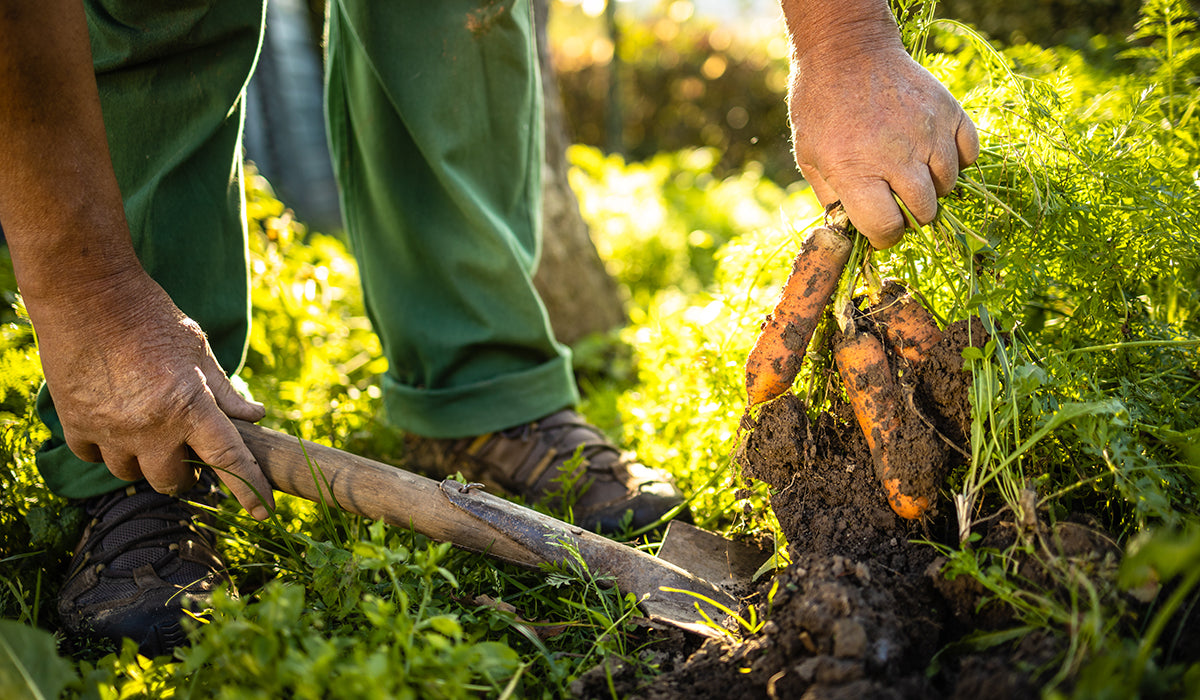Regenerative agriculture is an approach to farmland management which aims to nurture and restore degraded soil. The benefits of rebuilding organic soil matter are significant – impacting food quality, climate change and planet health. By rebuilding degraded soil, we increase the amount of carbon that can be absorbed from the atmosphere through dead plant matter while also improving soil fertility. The water cycle also benefits, because higher quality soil means less erosion and runoff, keeping low-quality soil out of tributaries.
Regenerative agriculture, and the act of improving soil quality, can also help to increase soil biodiversity, which is an important factor in a healthy planet. Soil biodiversity, according to the European Commission in its The Factory of Life presentation, “plays a vital role in mitigating climate change, storing and purifying water, providing antibiotics and preventing erosion. The well-being of all plants and land-based animals depends on the complex processes that take place in soil.”
How Does Regenerative Agriculture Affect Climate Change?
Regenerative agriculture involves a number of farming practices that help contribute to the goal of improving soil quality and, as a result, counteracting the effects of climate change.
When sunlight reaches the surface of the earth, it’s either absorbed or reflected back towards the atmosphere; solar energy that’s absorbed then warms the planet. Certain gases that exist in the atmosphere absorb the solar energy that reflects off the earth’s surface and hold onto it rather than letting it dissipate into space. This process, which works similarly to a blanket trapping warmth, is called the “greenhouse effect.” The responsible gases – carbon dioxide; methane, nitrous oxide and F-gases – are referred to as “greenhouse gases.”
The good news is that soil is naturally able to absorb carbons. The bad news is that human’s reliance on burning fossil fuels has released more carbons into the atmosphere than nature can handle. As soil degrades, it loses its carbon sequestration abilities. Regenerative agriculture aims to rebuild the health of the soil and its potential for carbon absorption.
The more carbons the soil can sequester from the atmosphere, the less carbons will be present in the atmosphere to hold onto reflected solar energy and warm the planet at a greater rate. So yes, regenerative agriculture practices can reduce the negative impacts of climate change.
Does Regenerative Agriculture Reduce Crop Yields?
Not necessarily. While there is some disagreement in research into crop yields – the traditional measure of a farm’s success – science tells us methods that improve soil health and biodiversity result in better production, stronger soil structure and higher insect diversity. This can lead to higher profits due to lower input costs like pesticide and fertilizer and the opportunity for diversified harvests due to mixed cropping.
How Can Improving Soil Health Help Climate Change?
Improving soil health is a complex process but there are many straightforward regenerative agriculture methods that farmers and even home gardeners can utilize to help increase biodiversity and, in turn, mitigate the effects of climate change.
How Can Rotational Grazing Help Fight Climate Change?
Rotational grazing is a method of feeding livestock in ever-rotating segments of a pasture in a way that allows the other areas of the pasture to “rest” and recover. Animals can have significant impact on the areas of a pasture they graze in, with soil becoming so compacted in highly trafficked areas that it’s unable to absorb water.
Animals usually graze at the same times of day, and will stop grazing based on time rather than whether they’ve had their nutritional fill. They’re also selective in their grazing and will focus on areas with the best-tasting and most nutritious plant life, and will return to that area once those plants have regenerated. But this “spot grazing” process means that some plants are eaten before they’re fully mature, meaning the regrowth can be of lower nutritional value while other areas go ungrazed and plants die.
Rotational grazing allows farmers to segment pastures so that livestock graze in one particular section of a pasture and are moved on to another, ungrazed segment once the plant material has been consumed. That way the other sections of the pasture are able to “rest” and healthily regrow plant life, in turn improving soil quality and increasing its ability to sequester carbons.
How Can Crop Rotation Help Climate Change?
Mixed cropping and crop rotation are two more regenerative agriculture methods that help to improve soil health and, as a result, mitigate the detrimental impacts of climate change.
Also known as polycropping, inter-cropping or co-cultivation, mixed cropping involves growing two or more different crops on the same piece of land in such a way that the plants grow among each other, like interlocked fingers. There are many benefits to mixed cropping: improvement of soil health thanks to a balance of incoming and outgoing soil nutrients; weed, pest and disease suppression; increased resistance to extreme climates; and a resulting increase in production.
Crop rotation is a similar concept in terms of the benefits it yields. In crop rotation, farmers grow a series of different crops in succession in the same area. When the same crop is grown over and over again in a particular area, the soil is gradually drained of certain nutrients and degrades the overall soil health.
By rotating the type of crops grown in that area, nutrient absorption is balanced. The process also helps to diversify the pest and weed populations in the area, resulting in better biodiversity and soil structure. And the better the soil health, the more carbon sequestration that can occur.
How Can Cover Cropping Helps Rebuild Soil Health?
Cover cropping, unlike the other methods mentioned here, has the immediate goal of growing a crop for the benefit of the soil rather than for food production. Of course, food production benefits from cover cropping down the line as well.
Cover crops are grown to protect the soil between harvests of cash crops (the crops that farmers sell) so that the soil doesn’t remain bare during off-seasons. When fields are bare, soil is easily susceptible to loss of nutrients through erosion and weed growth, neither of which are beneficial for soil health.
Growing a cover crop, though, allows the transfer of nutrients to continue. And when it’s time to kill the cover crop (before it makes seeds and starts the process of growth again), the dead plant matter is returned to the earth as mulch, enriching the soil below it and benefiting the cash crops that follow. Once again, the ultimate benefit of healthier soil is a higher rate of absorption of carbons from the atmosphere, thus helping to mitigate the impacts of climate change.
Final Notes
Regenerative agriculture has one important outcome in mind: to reverse the damaging effects of climate change. By using regenerative agriculture methods such as rotational grazing, cover cropping, mixed cropping and crop rotation, farmers are able to help improve the quality and nutrient balance of their soil. The healthier the soil, the more effective its ability to absorb the damaging carbons from our atmosphere which are contributing to global climate change.
MegaFood uses hundreds of thousands of pounds of produce from its trusted farm partners each year to manufacture premium supplements. Healthy soil equals healthy ingredients, which is why MegaFood is so committed to regenerative agriculture. We’ve advocated for national policy reform, lobbying against the use of dangerous chemicals like glyphosate in food production and partnering with The Carbon Underground and Green America to raise awareness about the importance of regenerative agriculture.
Learn more about our commitment to regenerative agricultural practices on our blog.


Leave a comment
This site is protected by hCaptcha and the hCaptcha Privacy Policy and Terms of Service apply.